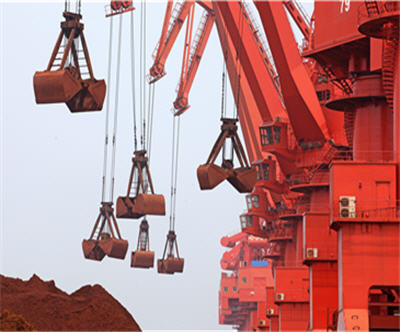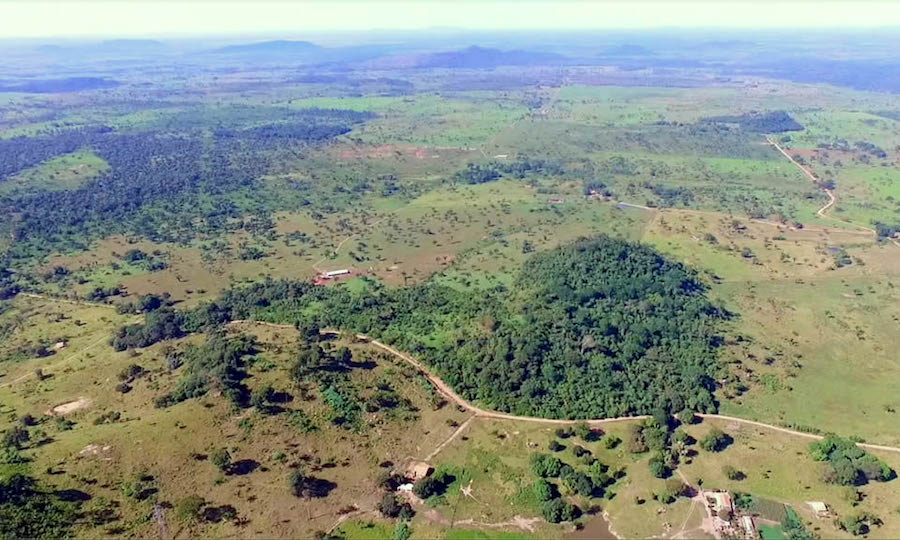Iron ore price hits fresh lows as Beijing warns of supply flood

Shares in producers fall after China’s powerful central planning agency says country’s “high steel demand period has passed” and inventories will stay high.
Benchmark iron ore fell more than 1% on Wednesday to fresh lows last seen September 2012.
According to data from the The Steel Index, the import price of 62% iron ore fines at China’s Tianjin port was pegged at $96.80 per tonne on Monday, down $1.30 on the day.
Iron ore is down 25% year to date and first declined to double digits nine days ago. Attempts at a comeback since then have fallen short.
Apart from that quick gap down in 2012 when the steelmaking raw material spent two weeks below $100 a tonne ore hasn’t traded in double digits at all since 2009 during the financial crisis.
China is responsible for two-thirds of the 1.2 billion tonne seaborne trade and on Wednesday the country’s powerful central economic planning agency said lower price are here to stay “blaming languishing ore prices on a flood of supply”.
“The period of China’s high steel demand has passed, and iron ore demand is now rising at a slow pace of 3%-4% annually,” the National Development and Reform Commission said in a statement:
“In the next two to three months, iron-ore output will increase, port inventories will remain high, and under slow demand for steel products, it will be difficult for iron ore prices to rise.”
China forges as much steel as the rest of the world combined and the globe’s most active steel future – Shanghai rebar – also continued to weaken hitting CNY3,111 ($497) per tonne near record lows for the contract.
Stockpiles of imported iron ore at Chinese ports reached an all-time high of 113.3 million tonnes on May 23 according to industry consultancy Steelhome, up more than 50% from this time last year.
Platts reports there are “simply too much material in the dockside market, forcing buying interest away from seaborne cargoes:”
“The problem is we are still dealing with losses that we made over iron ore cargoes we bought earlier, and this problem is made worse because whenever iron ore prices move up, they always far outpace steel improvements,” a [Jiangsu] steelmaker said.
A slowdown in the world’s second largest economy – particularly the property sector that accounts for almost half of all steel demand – has unnerved producers in Australia, Brazil and Africa even as they ramp up supply of the raw material to unheard of levels.
BHP said its on track to up production at its newest mine Jimblebar to 55 million towards its longer term target of 270 million tonnes per annum. Rio Tinto is most aggressive – it is ahead of schedule to reach 290 million tonnes per annum and is targeting 360 million tonnes per annum in the longer run.
Vale has been struggling to keep up with the Pilbara producers but the company is nevertheless sticking to its medium term expansion plans to lift its output above 400 million tonnes from the current 300 million tonnes-plus by 2018 as giant projects like S11D in the Carajas complex come on stream.
Anglo American’s Minas Rio project in Brazil could add another 26 million tonne before the end of this year at the same time its Kumba unit in South Africa return to nameplate capacity of 40 million tonnes-plus.
Gina Rinehart’s recently okayed Roy Hill project could dump an additional 55 million tonnes on the market by the end of next year.
While Canada has a number of ore projects in the offing, further out Africa is destined to become the price trendsetter.
Rio’s deal with Guinea on developing the Simandou deposit announced this week creates the prospect of a greenfield 95 million tonnes per annum mine within a decade.
Rio’s $20 billion project with Chinese and World Bank backing constitutes less than half the Simandou mountain range leases while smaller producers in West Africa are close to bringing to market ore from equally rich fields surrounding the Nimba mountains.
Share prices for the Big 3 – number one producer Brazil’s Vale (NYSE:VALE) and Australian giants Rio Tinto (LON:RIO), BHP Billiton (LON:BHP) – all declined on Tuesday, while North American operator Cliffs Naturual Resources (NYSE:CLF) tanked 4.6% after doubts were raised about its ability to honour debt covenants.
ADRs of Vale lost 1.5% in New York before turning higher. The Rio de Janeiro-based company is down 15% in 2014 despite a huge boost from its nickel operations – it’s the world’s number two producer – thanks to a soaring price for the metal used in steel alloys.
Number two Rio Tinto, which thanks to aggressive expansion in its home base of the Pilbara in Northwest Australia have been rapidly closing the output gap with Vale, dropped 2.8% in New York bringing its losses year to date to 6%. Among the diversified giants, Rio is most exposed to iron ore which last year accounted for nearly all its profits.
The world’s number one miner with a market value of $180 billion BHP, which is also adding to its iron ore business this year even as it slashes budgets and sell off assets in other divisions, gave up 1.4% in New York.
In a recent earnings announcement BHP said every $1 decline in the price of iron ore translates into a $120 million hit to the bottom line and the Melbourne-based firm portfolio of assets are not that heavily skewed to iron ore as its peers.
Number four producer behind BHP, Sydney-listed Fortescue Metals Group (ASX:FMG), managed to escape some of the sell-off in New York, but is down 21% this year given that all its ore is shipped to China. From zero production seven years ago is targeting output of annualized 155 million tonnes in 2014.
Still, with marginal costs of as low as $40 a tonne the Anglo-Australian giants should be able to weather the storm. Vale is targeting a sub-$20 cost of production on a free-on-board basis.
How smaller producers and project developers adapt to the new normal in iron ore remains to be seen.
More News
{{ commodity.name }}
{{ post.title }}
{{ post.date }}






Comments